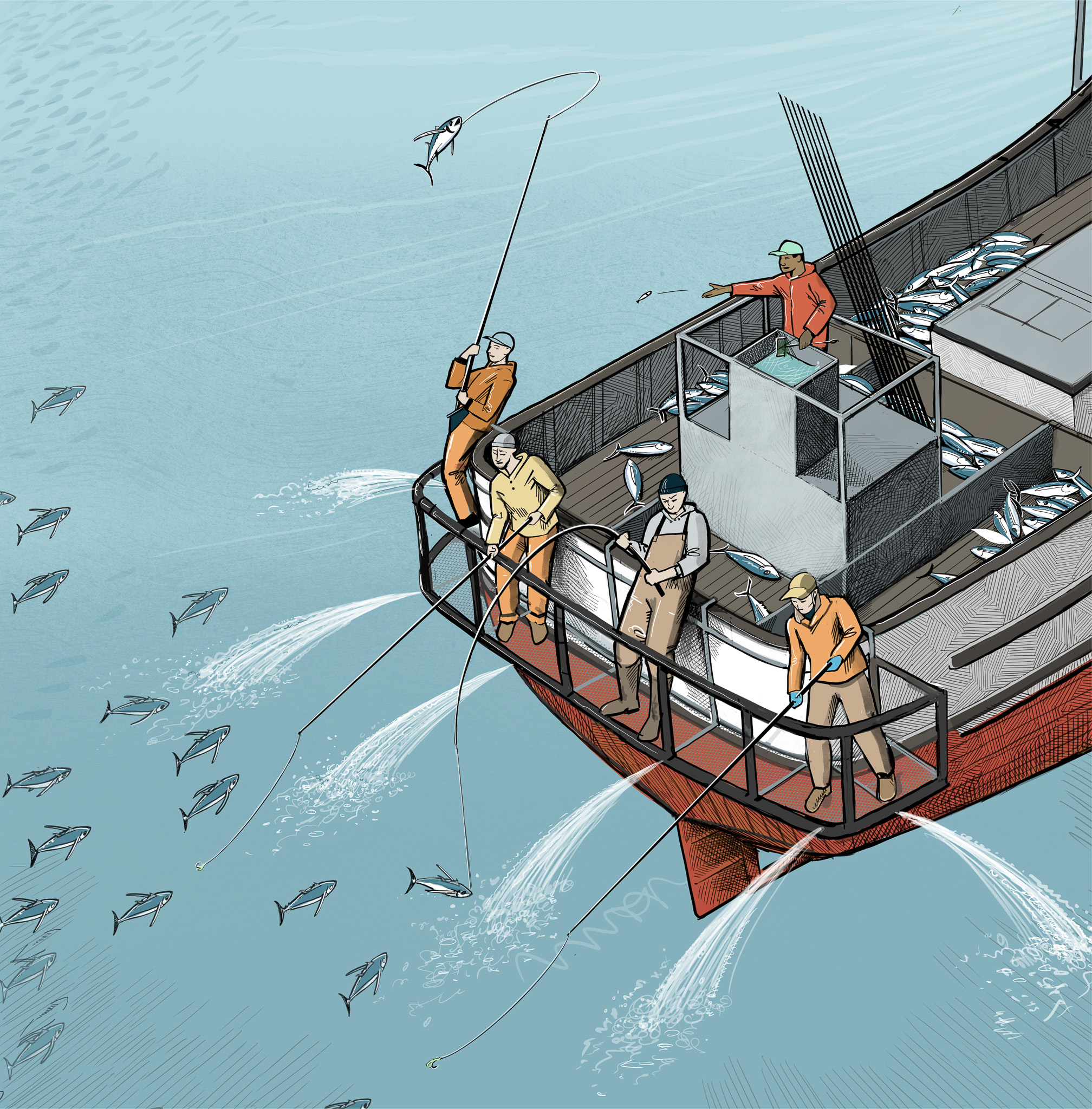
Pole
This hook-and-line fishing method involves a line with one or more hooks or lures attached to a pole held by a fisherman. Depending on the species targeted, baited or bare hooks or artificial lures may be used. If bait is used, fishermen may start the fishing trip by catching their own bait or they may buy live bait from others who catch it. In both cases, the bait is stored in a "live well" seawater tank on the boat. Fishermen may also use water sprayers that splash the ocean, mimicking the movement of small (bait) fish at the surface to attract larger fish such as albacore tuna.
For albacore pole fishing, fishermen stand in baskets or platforms at the back of the vessel near the waterline and use a large bamboo pole with a short fishing line to drop bare hooks into the water. When an albacore tuna bites the hook, the fisherman quickly lifts the pole and flings the fish over their head into the vessel. Pole fishermen may travel 50-200 miles offshore, with trips lasting from several days to several weeks.
Rod and reel
Other species are also targeted using rod and reel-style hook-and-line gear, lightweight fishing poles (rods, similar to those used by recreational fishermen) with lures or baited hooks. Targeted species are landed one at a time and put on ice to be landed whole. Species such as California halibut, rockfish, sheephead, and lingcod caught using rod and reel may be held in tanks with oxygenated seawater and kept alive; in other cases, the fish are packed in ice in the hold or in containers on the deck.